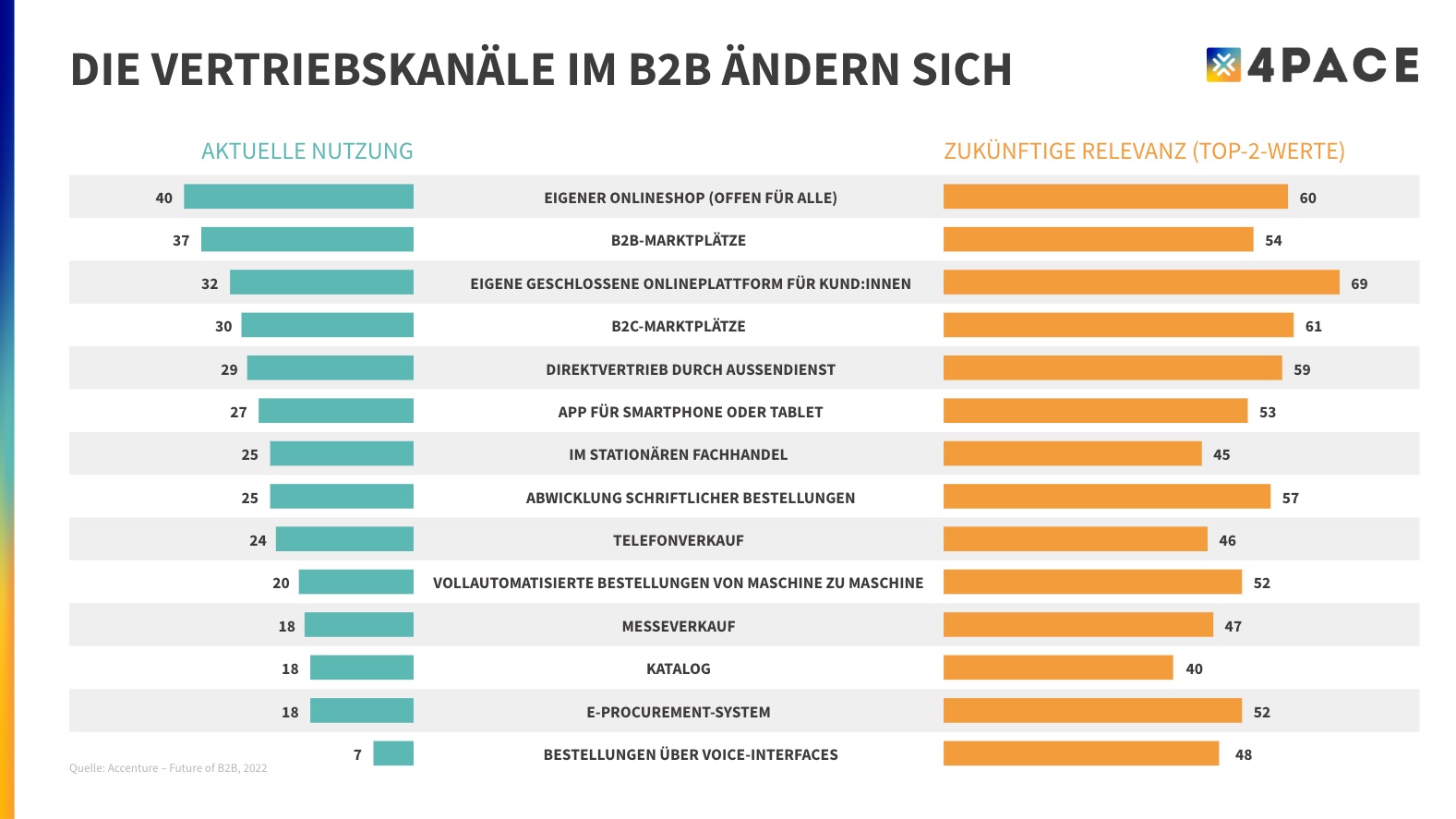Webshops, customer portals and platform solutions are also part of today’s digitalization inventory for industrial companies with diverse, usually highly complex product portfolios. However, the primary need for individual product selection, complicated structures and (authorization) workflows as well as a lack of master data and integration into specific customer systems often make e-commerce projects a hurdle race.

B2B sales channels in transition
Source: Accenture – Future of B2B, 2022
Other topics that may be interesting for you:
The diversity of today’s customer journeys requires customized solutions. Products require a lot of explanation and come in many variants, so the product selection in the online store needs to be customized. An integrative approach that links the online and offline worlds is crucial. Customers often start their journey online with configurations that are then continued by the sales department. Flexible authorization concepts play an important role here, especially for larger customers where different departments are involved.
MULTI-LAYERED BUSINESS MODELS
In e-commerce, the integration of complex business models and sales structures is essential. Conflicts with sales partners can be minimized through clear communication strategies and integration into the e-commerce scenario. In addition, the after-sales business was to be integrated into the e-commerce strategy to ensure seamless customer support.
IT SYSTEM INTEGRATIONS
Seamlessly integrating the online store into existing IT systems is no easy task. The large number of articles in combination with the query of prices and availability in the ERP system can cause long loading times for the e-commerce solution. Careful planning and implementation is required here to ensure smooth functionality.
MASTER DATA MANAGEMENT
Master data management is an often underestimated topic. Product data is often spread across different systems and consolidating it is tedious, but necessary for a successful e-commerce project. A central database is essential for consistent and reliable product information.
RECOGNIZING AND MAPPING NEEDS
The best online store is of little use if it is not used. It is important to convince customers with clear added value and benefits. Large industrial customers often prefer integrated e-procurement systems, which is why punch-out solutions are so important. important to address these large companies in particular. In addition, their products can sometimes require a great deal of explanation and be very varied. The product selection for such products must be individually adapted to the search behavior of your customers. Customer acceptance can only be increased through genuine added value.
For over 30 years, we have been supporting our customers from the core sectors of mechanical and plant engineering, the electrical industry and construction and furniture suppliers in the digital marketing of their products. We have found that being inactive in e-commerce is the biggest challenge for B2B companies.
The fact that business results are just good enough can lead to digital initiatives being delayed. As a result, many companies miss their chance. In just a few years, companies that continue to ignore the digital demands of their buyers are likely to be overtaken by competitors who act now.
It is therefore particularly important to regularly examine new trends and assess their relevance for your own company. Thanks to our experience from numerous national and international projects, we can identify these technologies as drivers for development in e-commerce.
Here are five current trends:

HOLGER REIMSBACH
solution manager

INA ROGALEV
junior marketing manager
This might also interest you